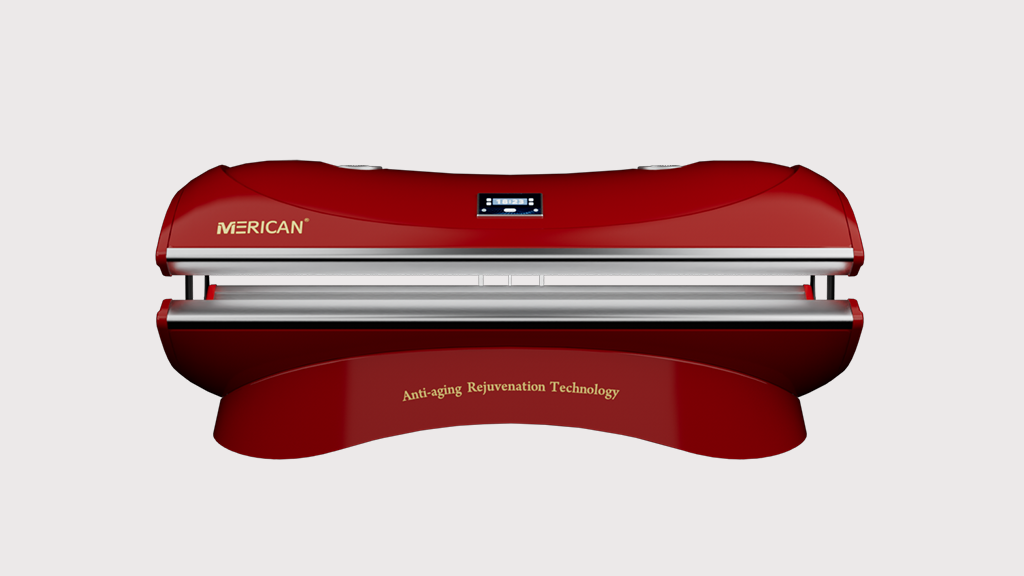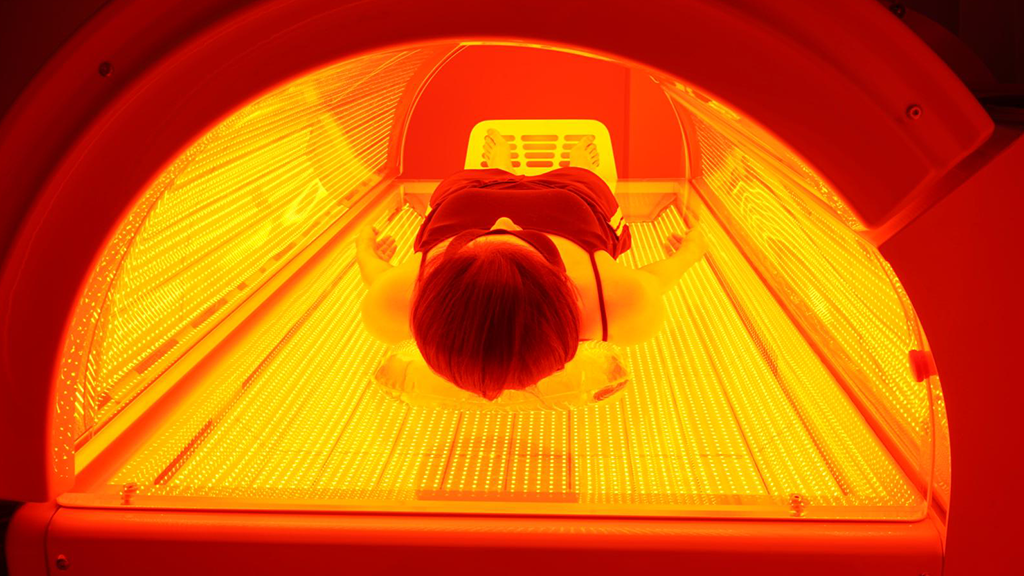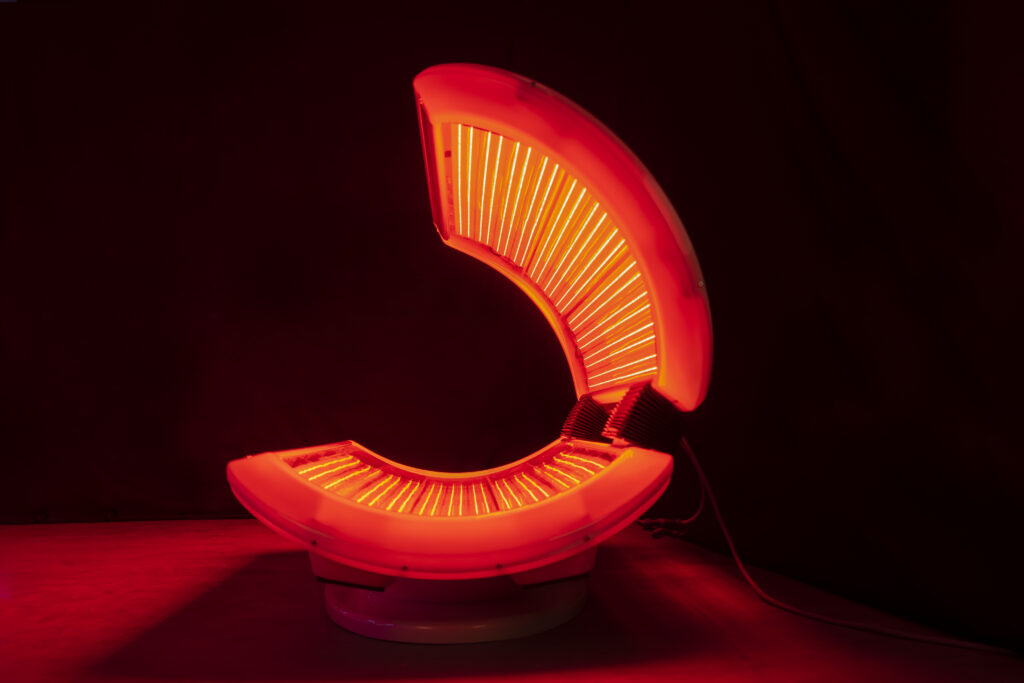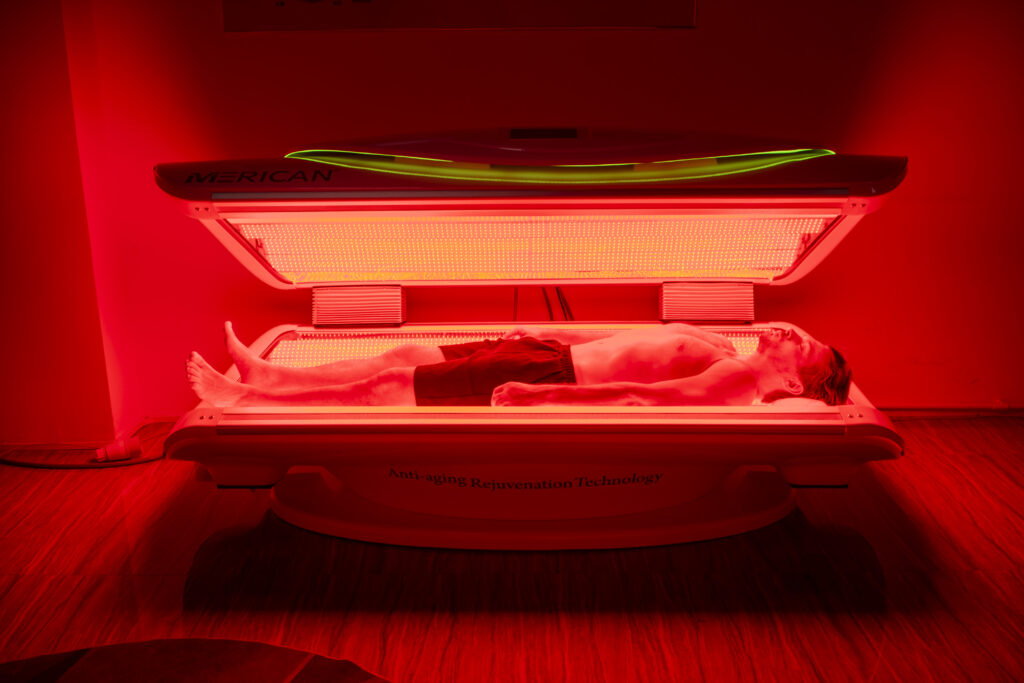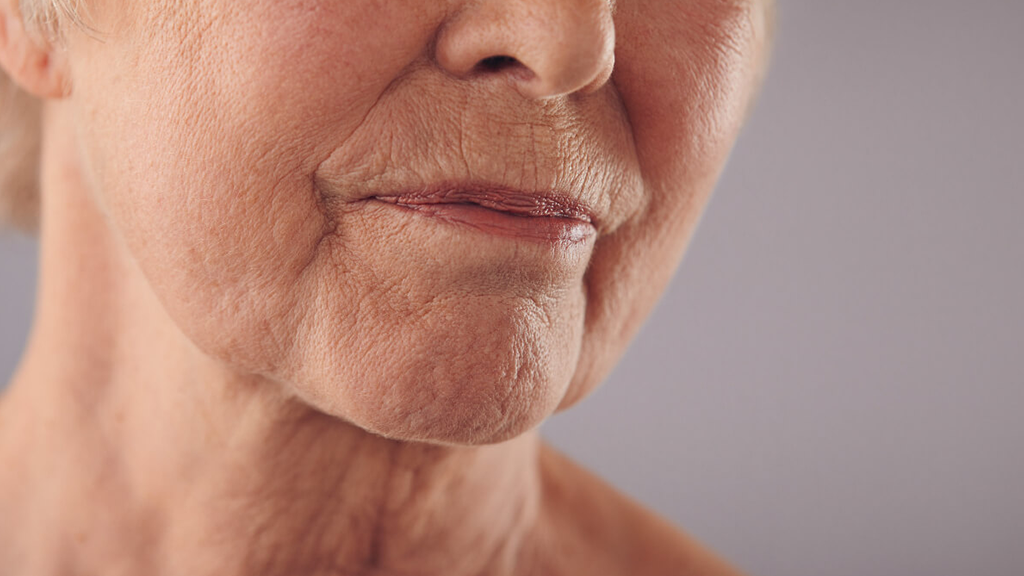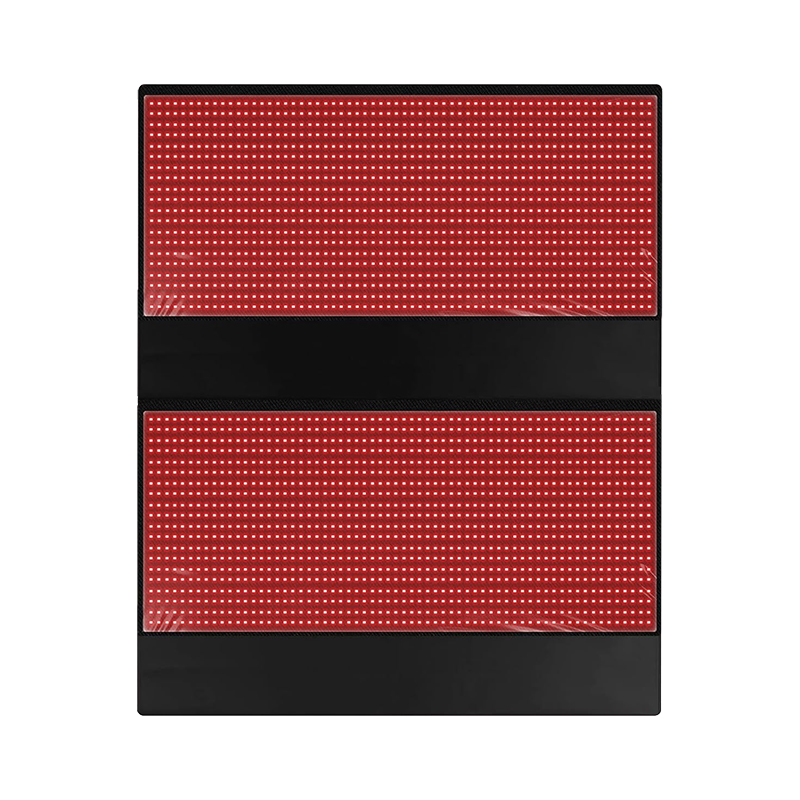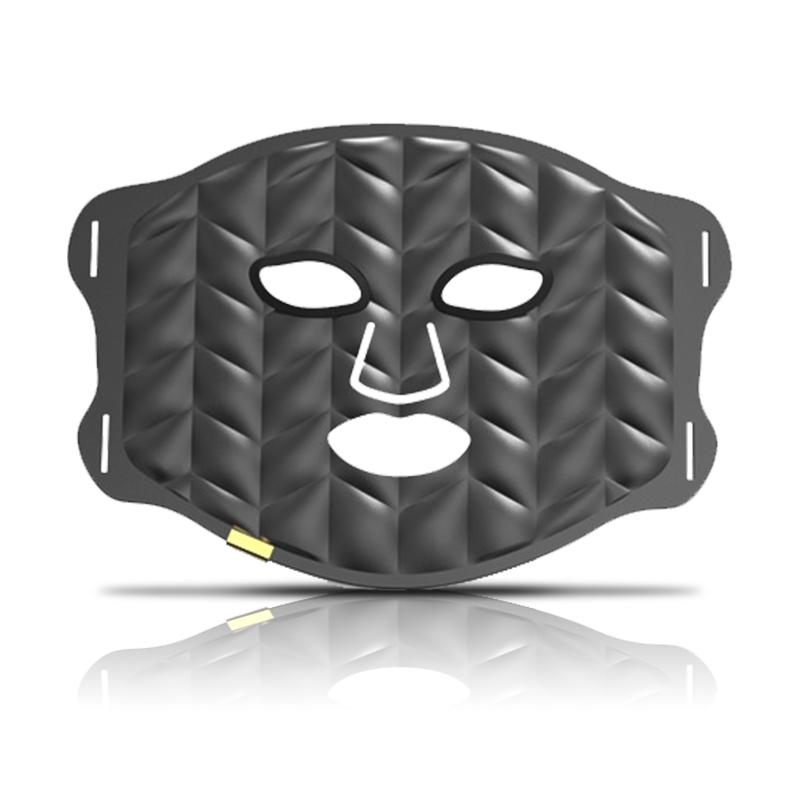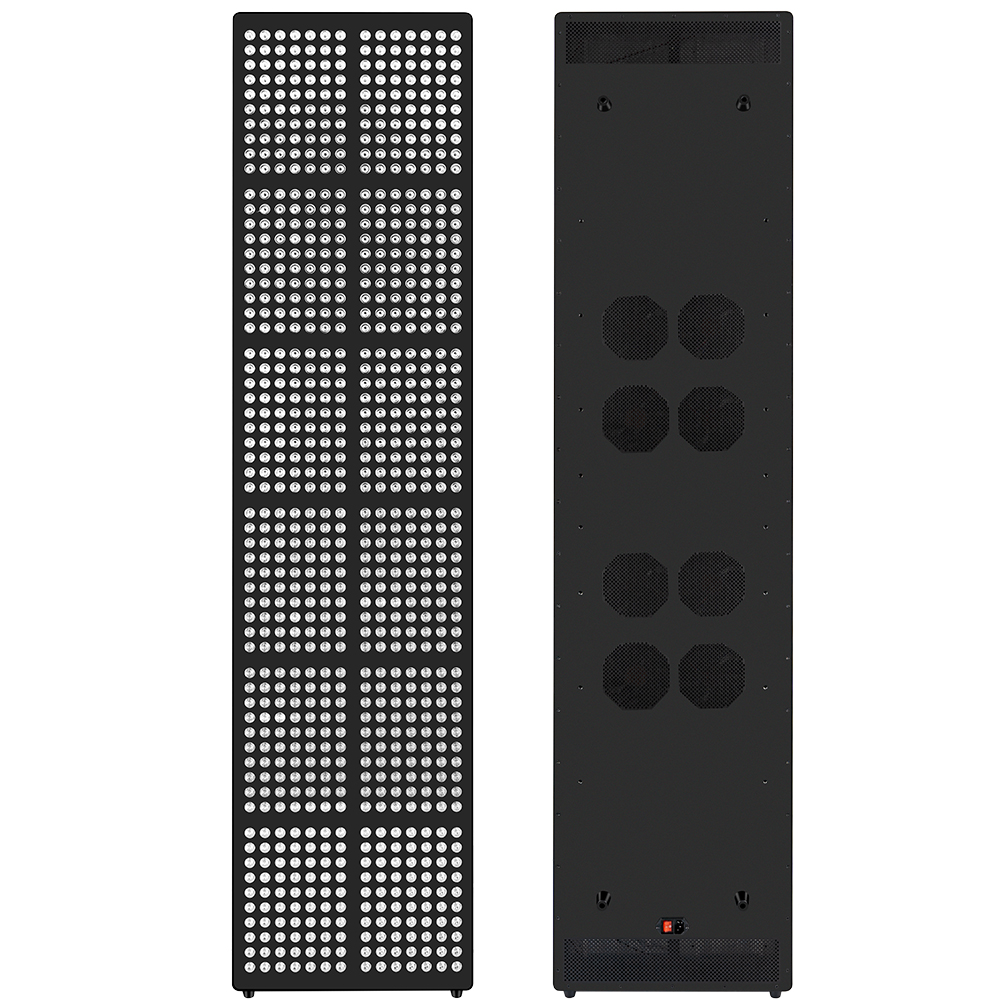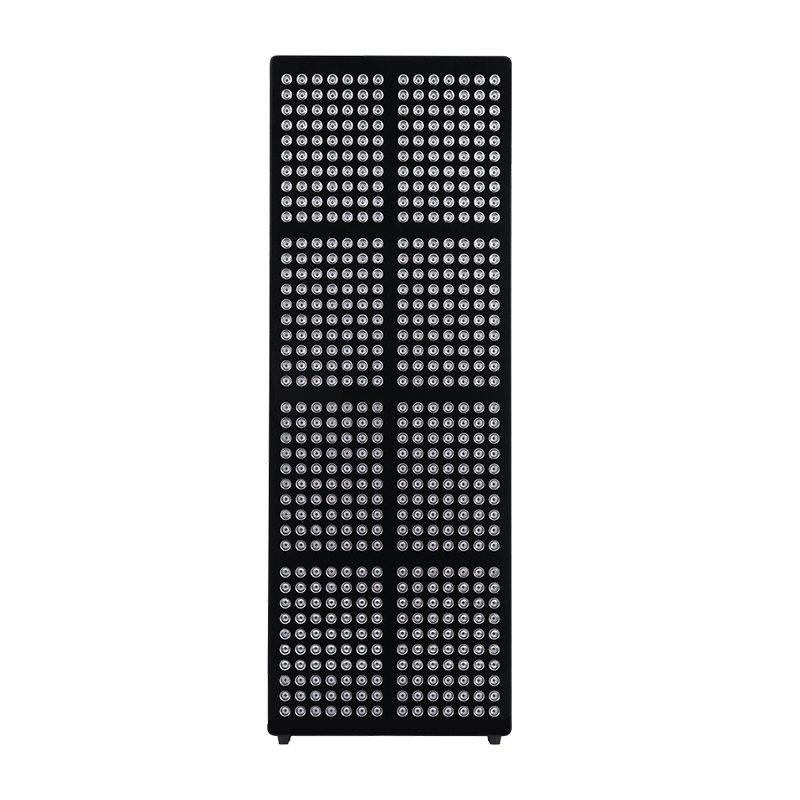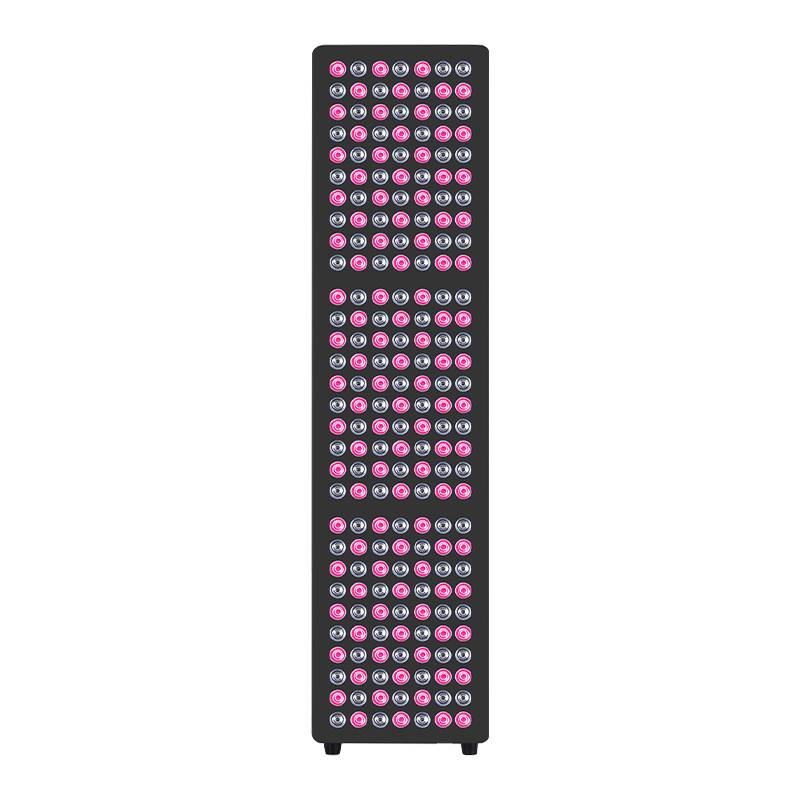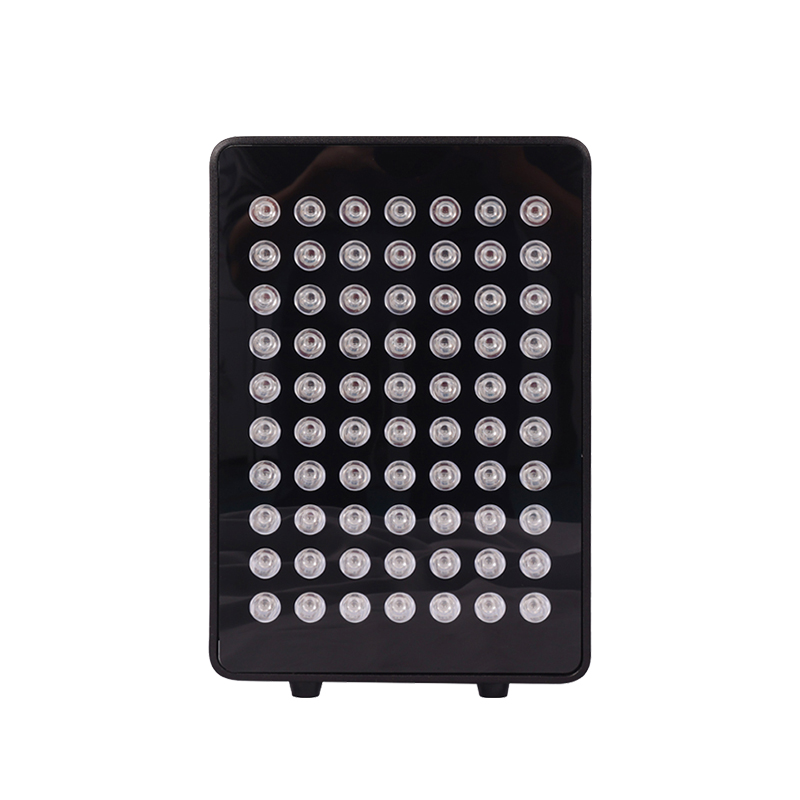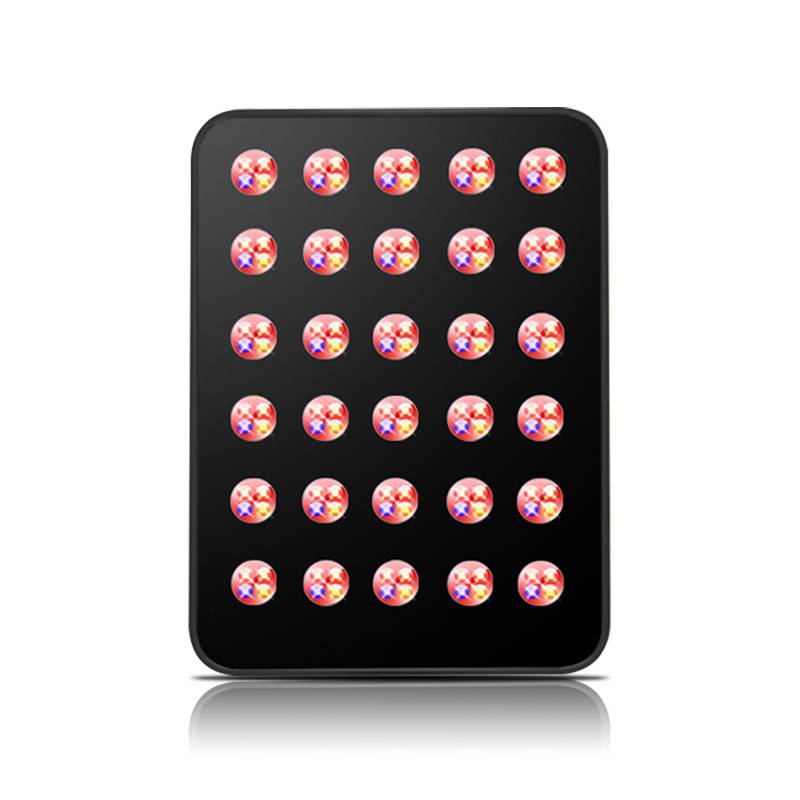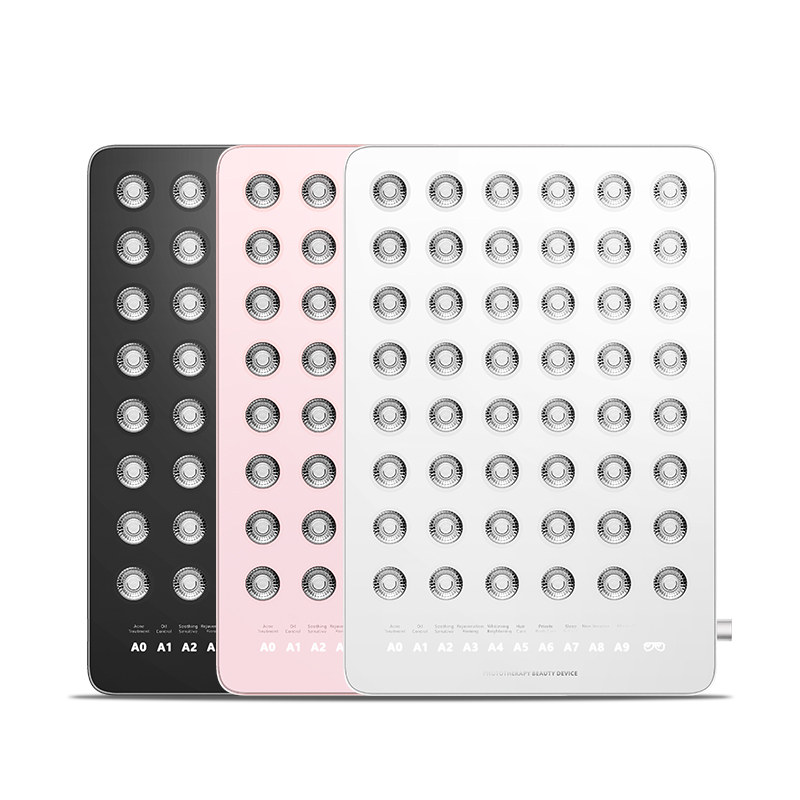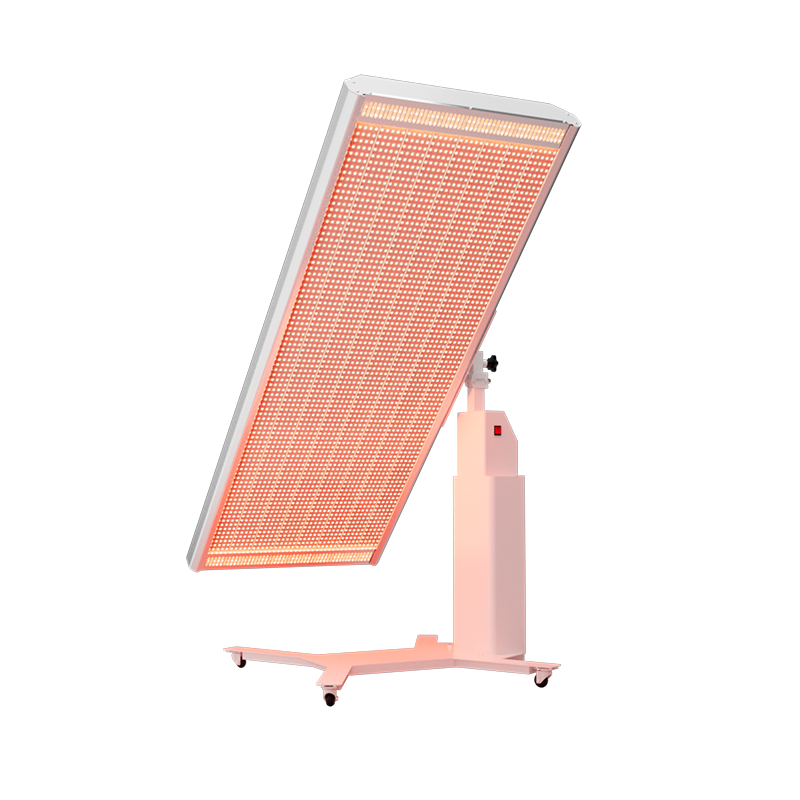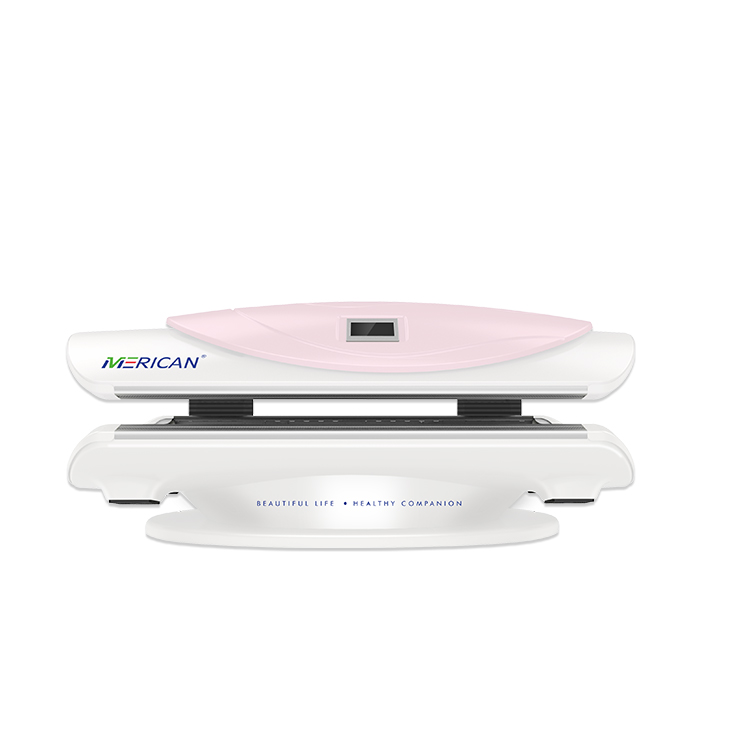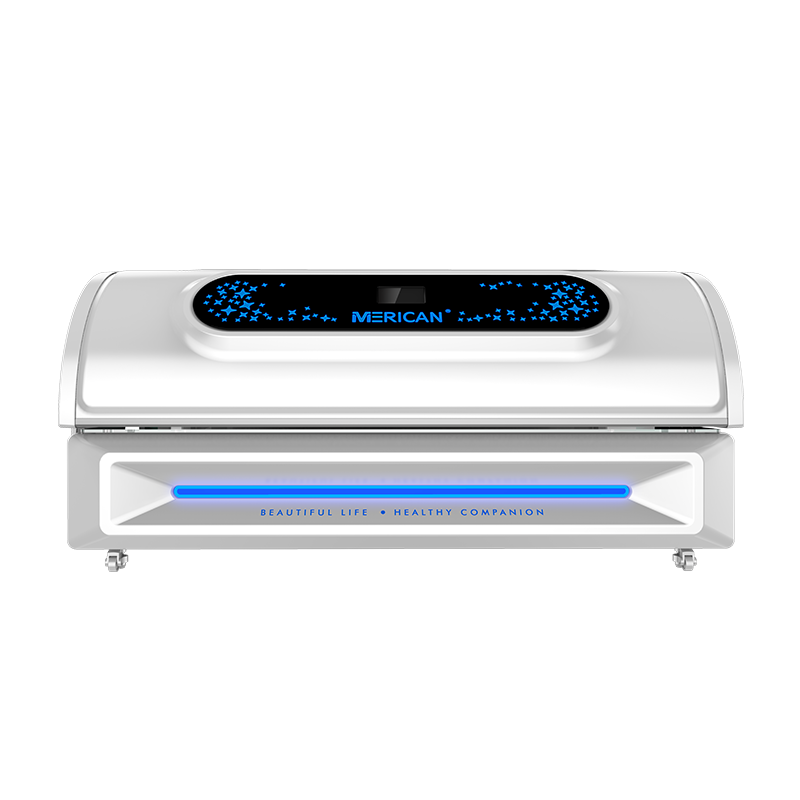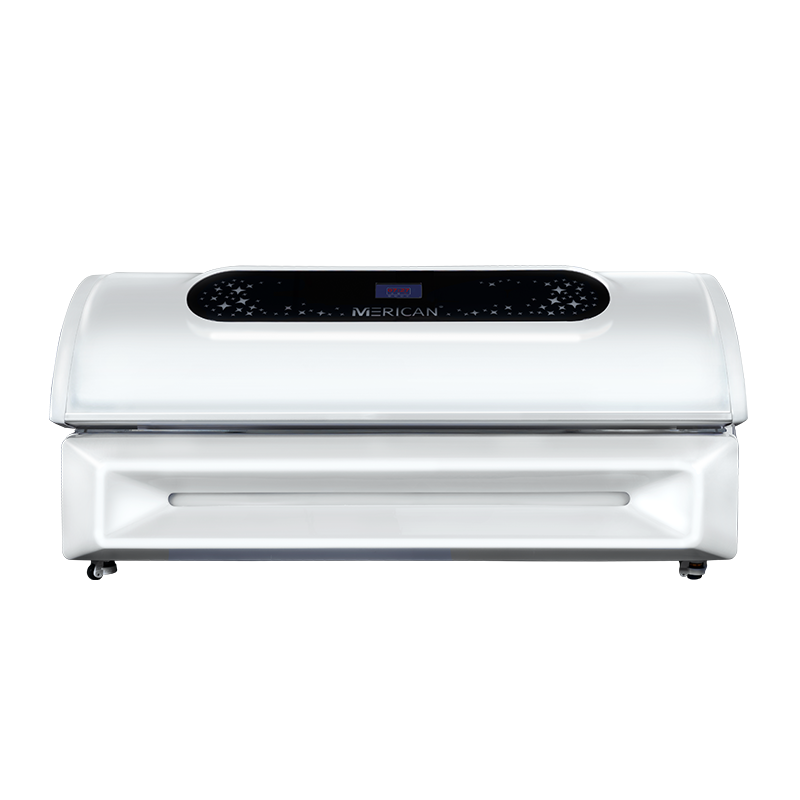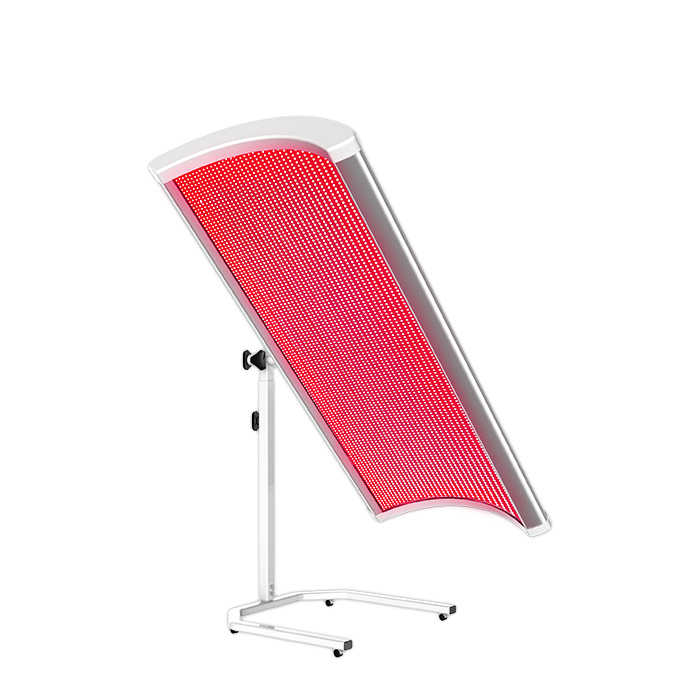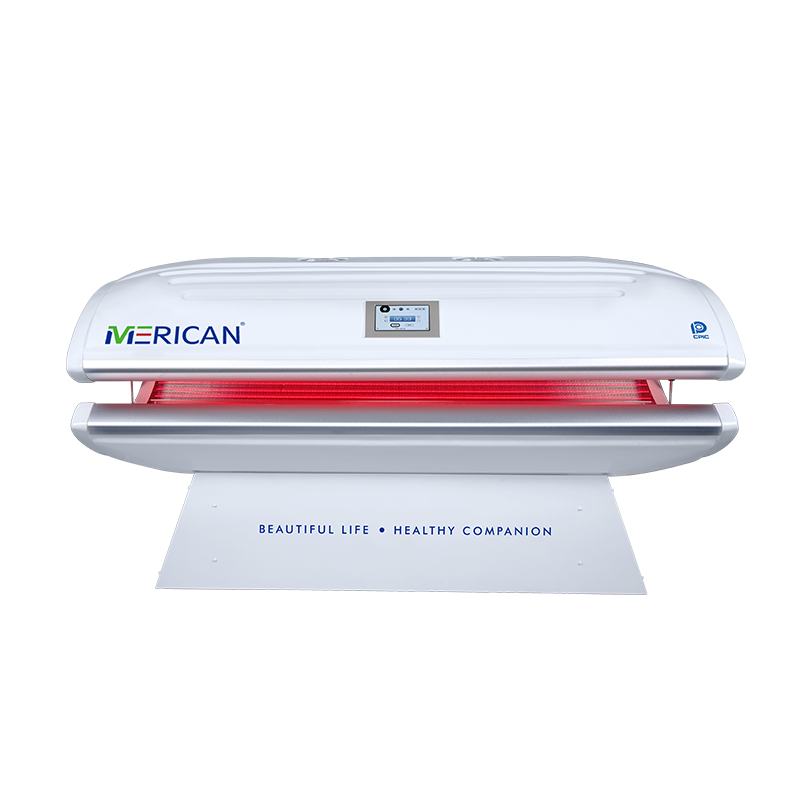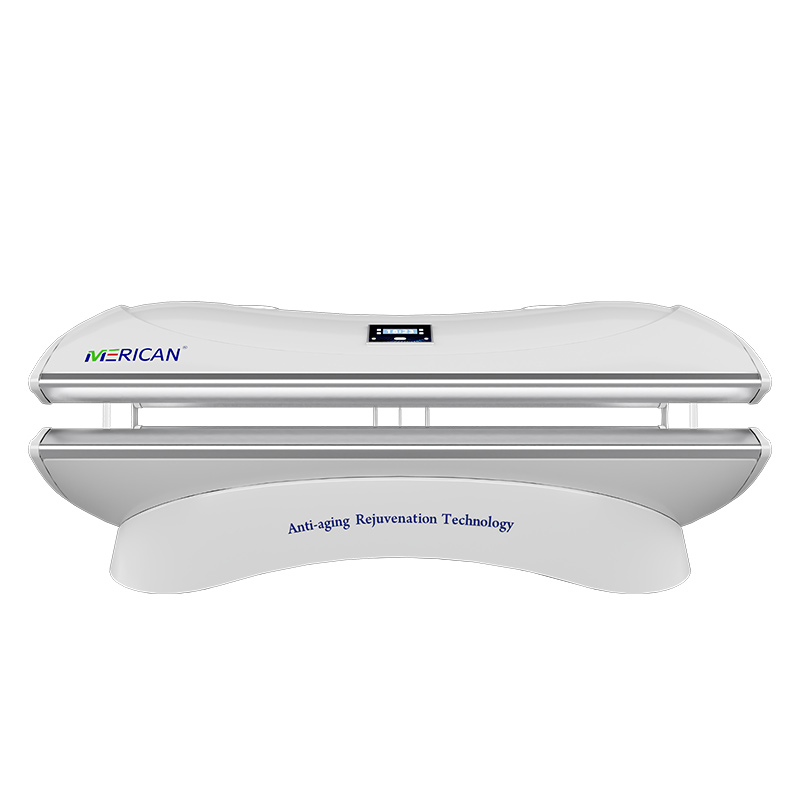Red light therapy, also known as low-level light therapy (LLLT) or photobiomodulation, involves exposing the body to low-wavelength red and near-infrared light. This light penetrates the skin to stimulate cellular function, enhance circulation, and promote healing.
Menopause is a natural phase in a woman’s life, but it often brings challenging symptoms like hot flashes, mood swings, sleep disturbances, and skin changes. While hormone replacement therapy (HRT) has been a traditional approach, many women seek non-invasive alternatives. One such emerging option is red light therapy (RLT). But how effective is it, and is it safe for everyone?
Potential Benefits of Red Light Therapy for Menopausal Symptoms

Hormonal Balance and Estrogen Levels
- Does red light therapy increase estrogen?
While direct evidence is limited, some studies suggest that RLT may influence hormonal balance by stimulating the endocrine system, potentially supporting estrogen production.
- Mood and Sleep Improvement
By enhancing melatonin production, RLT can improve sleep quality, which is often disrupted during menopause.
- Stress Reduction
RLT may help reduce cortisol levels, alleviating stress and mood swings associated with hormonal fluctuations.
Skin Health and Appearance
- Collagen Production
RLT stimulates collagen synthesis, improving skin elasticity and reducing wrinkles, which can be beneficial for menopausal skin changes.
- Menopause Red Face Treatment
Hot flashes can cause facial redness. RLT may help soothe the skin and reduce inflammation, serving as a potential treatment for menopause-related facial redness.
- “Boobs in Red Light”
Some women use RLT on the chest area to improve skin tone and firmness. However, it’s essential to consult with a healthcare provider before targeting sensitive areas.
Vaginal Health
- Vaginal Dryness Relief
RLT has shown promise in alleviating vaginal dryness and discomfort without the need for hormonal treatments.
- Improved Circulation
Enhanced blood flow from RLT may support vaginal tissue health, potentially improving sexual function.
Bone Density and Joint Pain
- Bone Health Support
While more research is needed, some studies suggest RLT may aid in maintaining bone density, which is crucial during menopause.
- Joint Pain Reduction
RLT’s anti-inflammatory effects can help alleviate joint pain and stiffness common in menopausal women.
What Is the Best Therapy for Menopause?
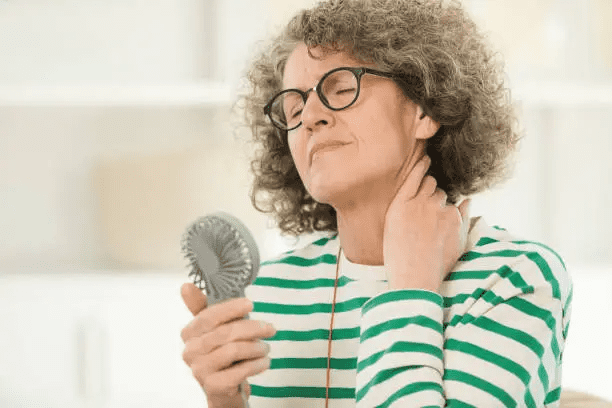
The optimal therapy varies based on individual needs and symptoms. Options include:
Hormone Replacement Therapy (HRT)
Effective for many, but may have risks for some women.
Red Light Therapy
A non-invasive option that may alleviate various menopausal symptoms.
Lifestyle Changes
Regular exercise, a balanced diet, and stress management can significantly impact symptom severity.
Alternative Therapies
Acupuncture, herbal supplements, and mindfulness practices may offer relief.
Consulting with a healthcare provider can help determine the most suitable approach.
Red Light Therapy and Mental Health During Menopause
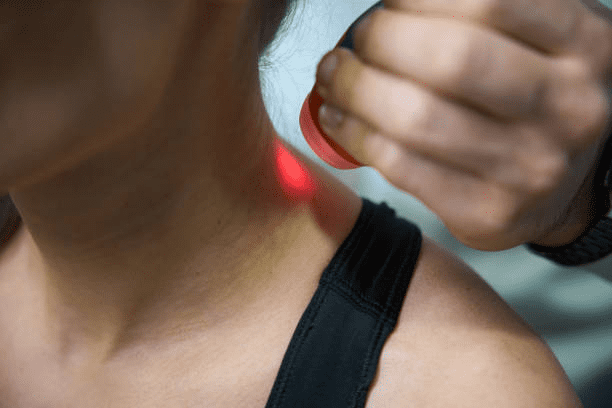
Combating Mood Swings and Anxiety
- Hormonal Shifts and Mood Disorders
Estrogen fluctuations during menopause can cause mood instability, anxiety, and even depression. Red light therapy (RLT) may help stabilize mood by improving cellular energy (ATP production) in the brain and enhancing neurotransmitter function.
- Boosting Serotonin and Dopamine
Some early studies suggest RLT may enhance the production of serotonin and dopamine, key chemicals involved in happiness and mental clarity.
- Reducing Cortisol Levels
High cortisol levels due to menopausal stress can worsen anxiety. RLT may help regulate the HPA (hypothalamic–pituitary–adrenal) axis, reducing cortisol naturally.
- Improving Resilience to Stress
By improving sleep, energy, and cognitive function, RLT indirectly increases emotional resilience and reduces daily stress triggers.
- Complementary to Talk Therapy or Medications
RLT can be used alongside antidepressants or counseling as part of a broader approach to mental well-being.
How to Use Red Light Therapy Safely at Home
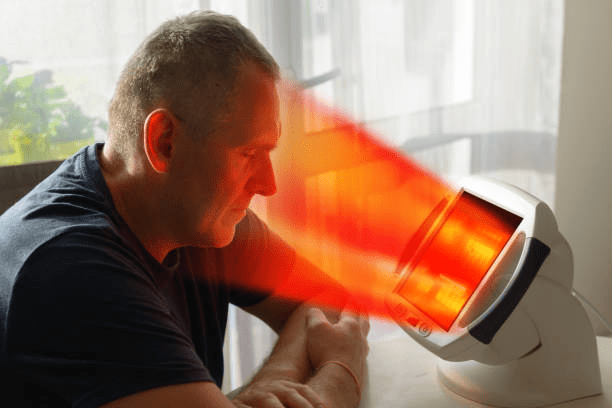
- How Long Should You Use Red Light Therapy?
For menopause support, most people benefit from 10–20 minutes per session, 3–5 times per week. More is not always better.
- Can You Use Red Light Therapy Every Day?
Yes, but it’s important to follow the device’s guidelines and monitor how your body responds. Overuse can cause skin irritation or diminished benefits.
- Position and Distance Matter
Stay about 6–12 inches from the light source, and avoid direct exposure to sensitive areas without protection.
- Choose the Right Wavelength
Look for devices that emit light in the 630–660 nm (red light) and 810–850 nm (near-infrared) ranges. These penetrate the skin effectively without causing harm.
- Consistency is Key
RLT is not a quick fix. Consistent use over weeks or months is necessary for noticeable benefits.
FAQs

Who Should Not Use Red Light Therapy?
While RLT is generally safe, certain individuals should exercise caution:
- Pregnant Women
The effects of RLT during pregnancy are not well-studied; thus, it’s best to avoid.
- Individuals with Photosensitivity
Those with conditions like lupus or who take photosensitizing medications should consult a doctor before use.
- Active Cancer Patients
Particularly, those with breast cancer should avoid RLT on tumor sites due to potential risks.
- Eye Conditions
Direct exposure to the eyes should be avoided; protective eyewear is recommended.
What are the Dangers of Excessive Red Light Therapy
- Skin Irritation
Prolonged exposure may cause redness or burns.
- Eye Damage
Without proper protection, RLT can harm the eyes.
- Hormonal Imbalance
Excessive use might disrupt hormonal levels, although more research is needed.
- Diminished Effectiveness
Overexposure can lead to reduced benefits, emphasizing the importance of moderation. Adhering to recommended usage guidelines is crucial to minimize risks.
Conclusion
Red light therapy presents a promising, non-invasive option for managing various menopausal symptoms, from hormonal imbalances to skin changes. While it’s not a one-size-fits-all solution, RLT can be a valuable component of a comprehensive menopause management plan. As with any therapy, it’s essential to consult with a healthcare provider to determine its suitability for your individual needs.

